|
Saarinen
Family Story Told |
 |
HANCOCK – The architectural and design
achievements of the Finnish Saarinen family were the
subject of a presentation this past week, at the
Finlandia University Finnish American Heritage
Center.
“The Artistry of the Saarinens,” was presented by
Mark Coir, director of archives at the Cranbrook
Educational Community, Bloomington Hills, Mich.
After Mr.Coir's presentation Susan Saarinen, the
granddaughter of architect Eliel Saarinen and the
daughter of architect Eero Saarinen, provided the
audience with personal insight into the lives of her
extremely talented and artistic family.
|
 |
Photo above Susan Saarinen
and Mark Coir sit in the Saarinen designed "Tulip"
chair
|
Saarinen and Coir are the Finlandia Foundation
2007-08 Lecturers of the Year.
The presentation was sponsored by the City of
Hancock’s Finnish Theme Committee (a Finlandia
Foundation chapter) and Finlandia University. |
Susan Saarinen, principal of Saarinen Landscape
Architecture in Golden, Colorado, is the daughter of
architect Eero Saarinen, designer of the St. Louis
Arch, and grand-daughter of Eliel Saarinen. She grew
up at Cranbrook, an intensely creative environment,
where sculptor Carl Milles and ceramist Maija
Grotell taught and where her God-father, Charles
Eames, furniture designer Florence Knoll and
sculptor Lily Swann, among others, met and developed
their crafts.
Susan is a landscape architect, an artist and a
teacher. |
Mark Coir has served as the Director of Archives
and Cultural Properties, Cranbrook Educational
Community, Bloomfield Hills, Michigan, for the past
twenty-five years. His scholarly interests have
focused on the rich cultural heritage of Cranbrook
and especially on the achievements of the famed
Saarinen family, native Finns who built
extraordinary artistic careers in the United States.
Among recent publications he has contributed to are
Eero Saarinen:
Shaping the Future (2007) and Craft in America
(2006)
|
 |
| a reception for Saarinen and Coir was held prior
to the evening's lecture |
 |
Architect Eliel Saarinen (1873-1950) designed
the Helsinki Train Station, buildings at the
Cranbrook Academy of Art in Bloomfield Hills, Mich.,
and distinctive furniture and carpets. His design
for the Cranbrook campus, which the entire family
worked on, served as a model of artistic
collaboration and furthered his conviction that
architecture must encompass the “total environment,”
from landscapes to buildings to furnishings and
decorative objects.
|
Eero Saarinen (1910–1961), Eliel’s son, designed
Nikander Hall at Finlandia University. Among Eero’s
more widely known architecture and design work are
the St. Louis Arch, the School of Music at the
University of Michigan, and the “Tulip” or
“Pedestal” chair. He was widely acknowledged as a
leader of the second generation of modernists who
rose to prominence after World War II. His works
also include such 20th-century icons as the General
Motors Technical Center, Detroit, New York’s Trans
World Airlines Terminal, and Dulles International
Airport Terminal outside Washington, D.C.
|
| Other prominent artistic members of the Saarinen
family include Louise, or "Loja" (1879- 1968),
Eliel's wife, a textile designer and sculptor;
and Pipsan (1905- 1979), Eero's sister, a
designer and interior decorator. |
| |
|
HISTORY |
Eliel Saarinen
Eliel Saarinen was born in Rantasalmi, Finland in
1873. After he graduated from Helsinki Polytechnic,
he practiced with Herman Gesellius and Armas
Lindgren. In 1923 he emigrated to the U.S. where he
designed and then taught at Cranbrook. His son, Eero,
became his partner in 1937.
|
|
 |
| |
Saarinen's early monumentality owes much to the
Vienna Secession movement. His designs expressed a
Nordic refinement of the European Art Nouveau.
Saarinen's work depended on the integration of
cultural symbolism with material and form. His work
also owed much to the combined precedents of Finnish
farm settlements and the Arts & Crafts movement.
Saarinen borrowed from the forms and materials of
both past and present, regional and international.
He abstracted classical style and Finnish vernacular
to suit the Finnish sensibility. By 1902 his
buildings began to exhibit the clean massing and
heaviness of traditional Finnish buildings. Because
of the simplicity of his designs, he was linked to
minimalism.
Eliel Saarinen died in Michigan in 1950. |
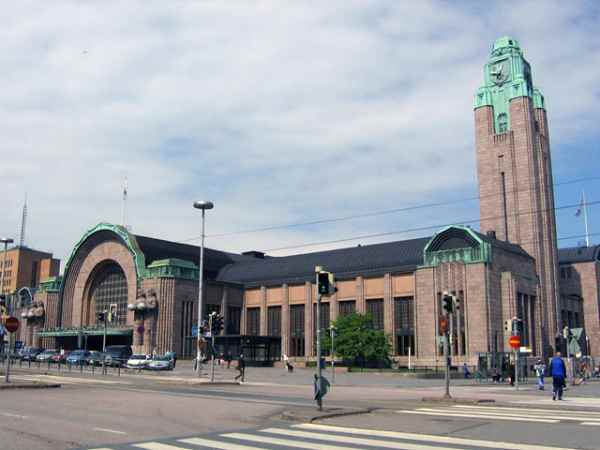 |
| above - The Helsinki Railroad Station |
|
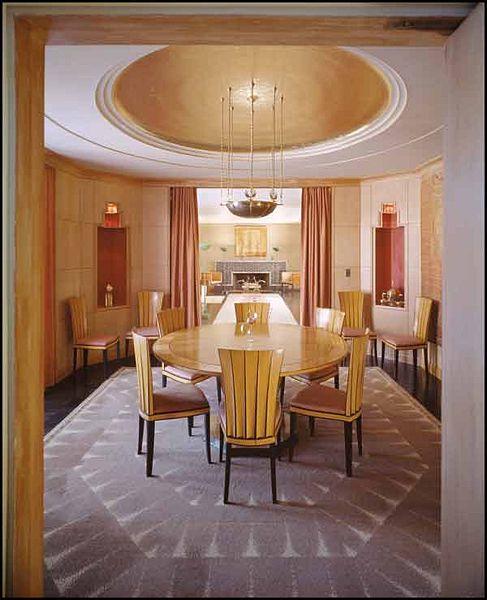 |
| Saarinen house at the Cranbrook Campus |
| Eero Saarinen was born in Finland in 1910 and
emigrated to the United States with his family in
1923. Eero’s career began in collaboration with his
remarkably gifted family: his father, Eliel (1873–
1950), the architect of Helsinki’s main train
station and many other prominent buildings; his
mother, Louise, or “Loja” (1879– 1968), a textile
designer and sculptor; and his sister, Eva-Lisa, or
“Pipsan” (1905– 1979), a designer and interior
decorator |
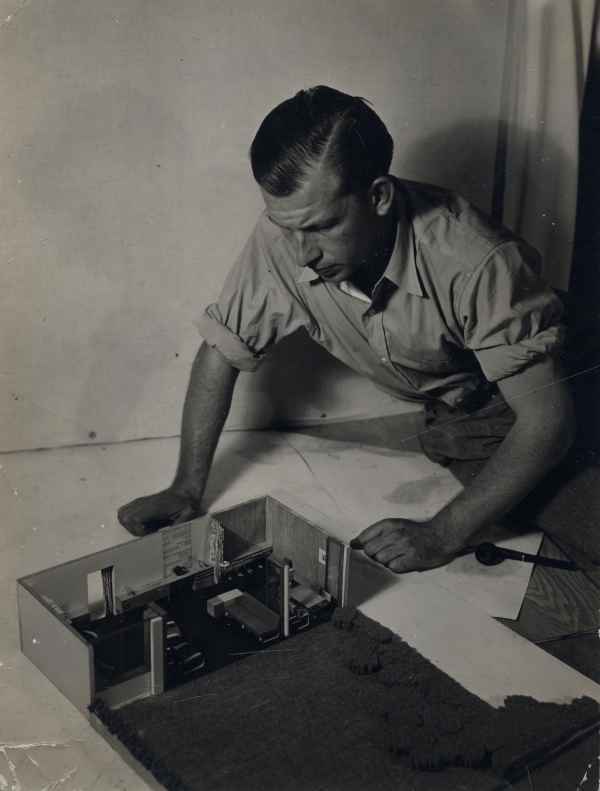 |
| above Eero works on a model his favorite method
of design. He did much more modeling than drawing. |
| . Eliel’s design for the Cranbrook campus
in suburban Detroit, which the entire family worked
on, would remain an important touchstone throughout
Eero’s career. It served as a model of artistic
collaboration and the conviction that architecture
must encompass the “total environment,” from
landscapes to buildings to furnishings and
decorative objects. Equally influential on Eero’s
later efforts to enrich modern design were his
sculpture classes in Paris (1929– 1930), his
architectural education at Yale University (1931–
1934), and his subsequent travels in Europe, Egypt,
and Mexico to see some of the great monuments of
architectural history. |
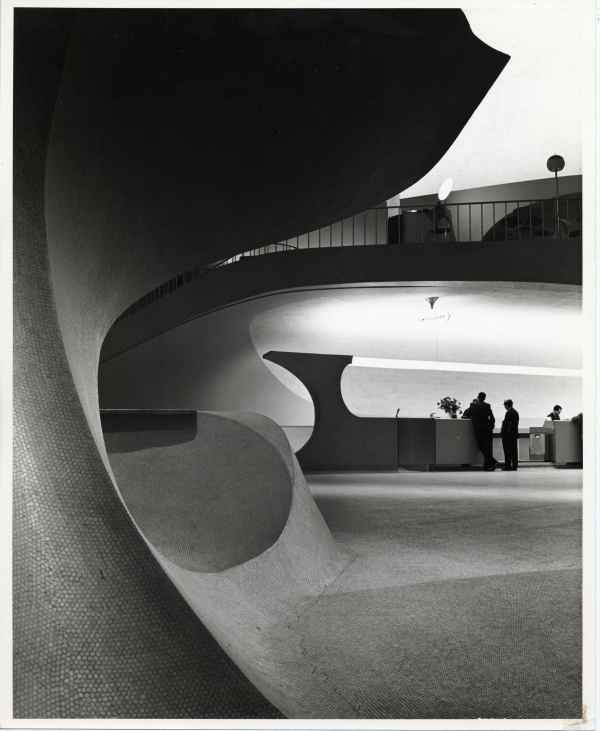 |
| above the Famous TWA terminal in New York |
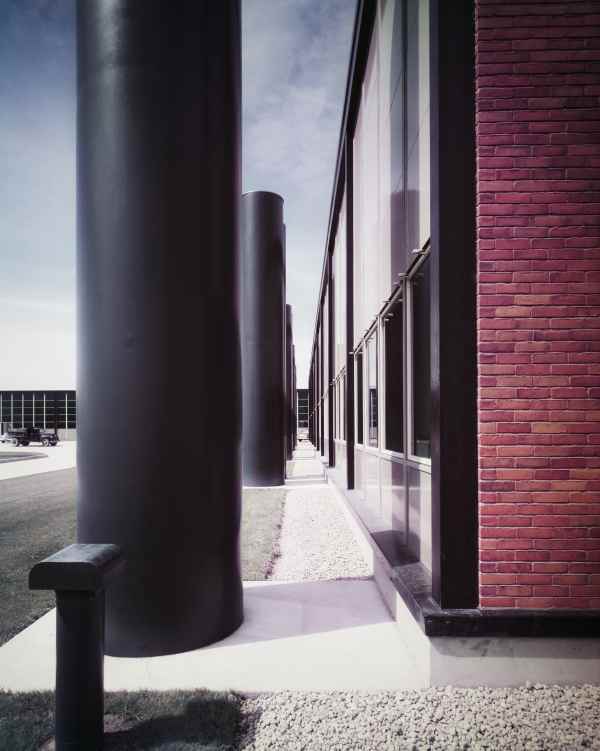 |
| above - General Motors Technical Center |
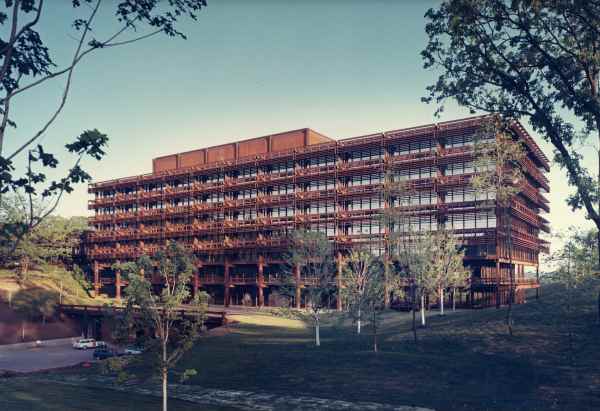 |
| above - John Deere Headquarters |
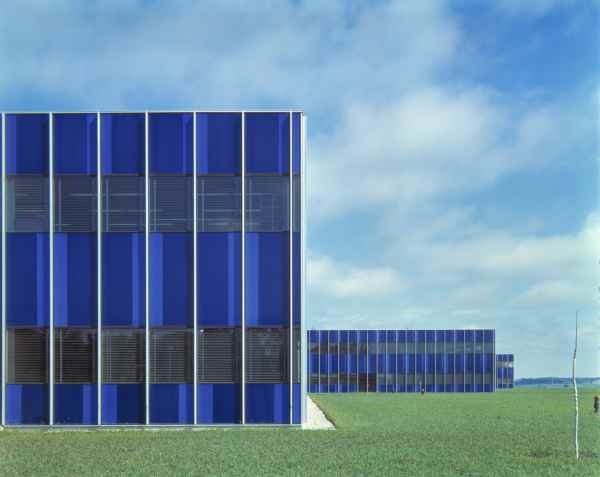 |
| above IBM Headquarters |
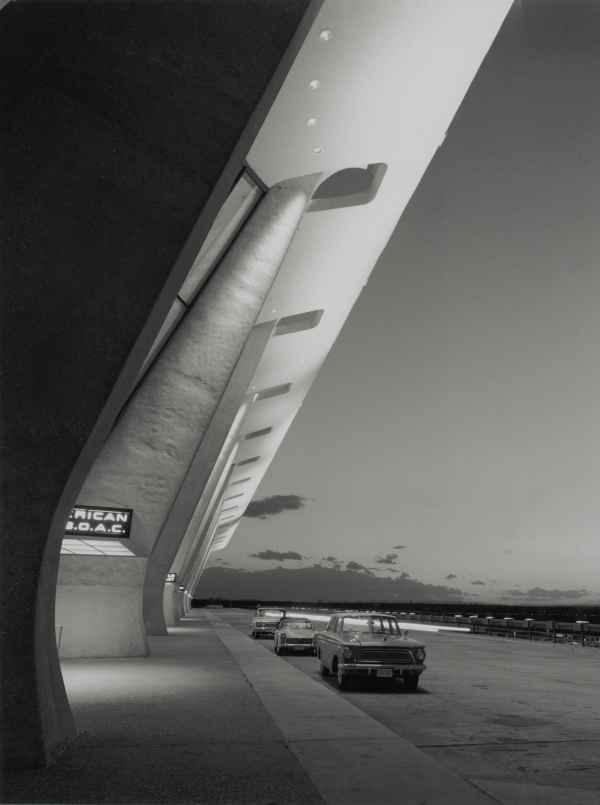 |
| above - Dulles Aiport, Washington D.C. |
 |
| above - the St. Louis Gateway Arch |
| Eero Saarinen was one of the most prolific,
unorthodox, and controversial masters of
20th-century architecture. Although his career
was cut short by death at age 51 in 1961, Eero
Saarinen was one of the most celebrated
architects of his time, both at home and abroad.
In the postwar decades of what has been called
“the American Century,” Saarinen helped create
the international image of the United States
with his designs for some of the most potent
symbolic expressions of American identity such
as St. Louis Gateway Arch (1948-64), General
Motors Technical Center (1948-56), Detroit and
TWA Terminal (1956-62) at New York's John F.
Kennedy Airport |
| |